Metallic elements are fantastic tools for transforming areas, bringing a touch of luxury and modernity to interior decoration. Whether through the soft shine of copper, the splendor of gold, or the sophistication of nickel, metallics can elevate any space, making it unique and memorable.
Design your client's living room, where light subtly reflects off a brass coffee table, or a bedroom, where small silver details on the cushions and picture frames add a touch of discreet glamour. These are just two examples of how metallic finishes can make all the difference in creating a harmonious and elegant space.
Did you know that metals have a long history in interior decoration? Since ancient times, civilizations such as the Egyptians and Romans have used precious metals to adorn palaces and temples. At that time, metals were a symbol of power and wealth. Today, interior designers continue to explore the potential of metallics, taking advantage of their versatility and timeless beauty.
Metallic finishes are valued for their durability, ability to reflect light, and add depth to spaces. Furthermore, metals in decoration can have a positive psychological impact. Spaces decorated with metallic elements tend to be perceived as more sophisticated and modern, contributing to well-being and satisfaction. The reflective nature of metals can also create a sense of spaciousness and light in a room, enhancing the overall mood.
What is the key to using metallics effectively? Balance. A harmonious combination of different metals can create a cohesive and visually exciting space, while excessive use can result in an overcrowded space.
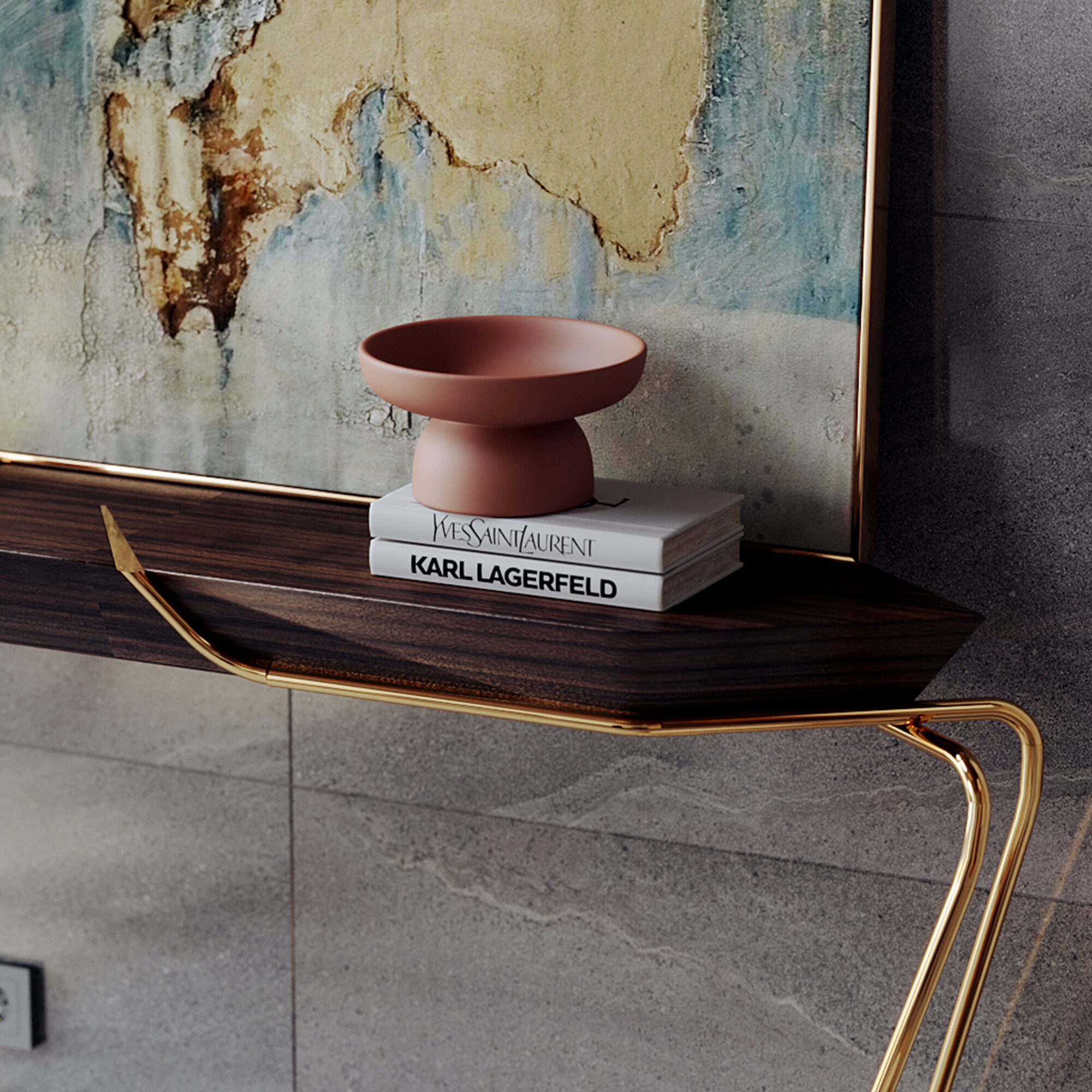
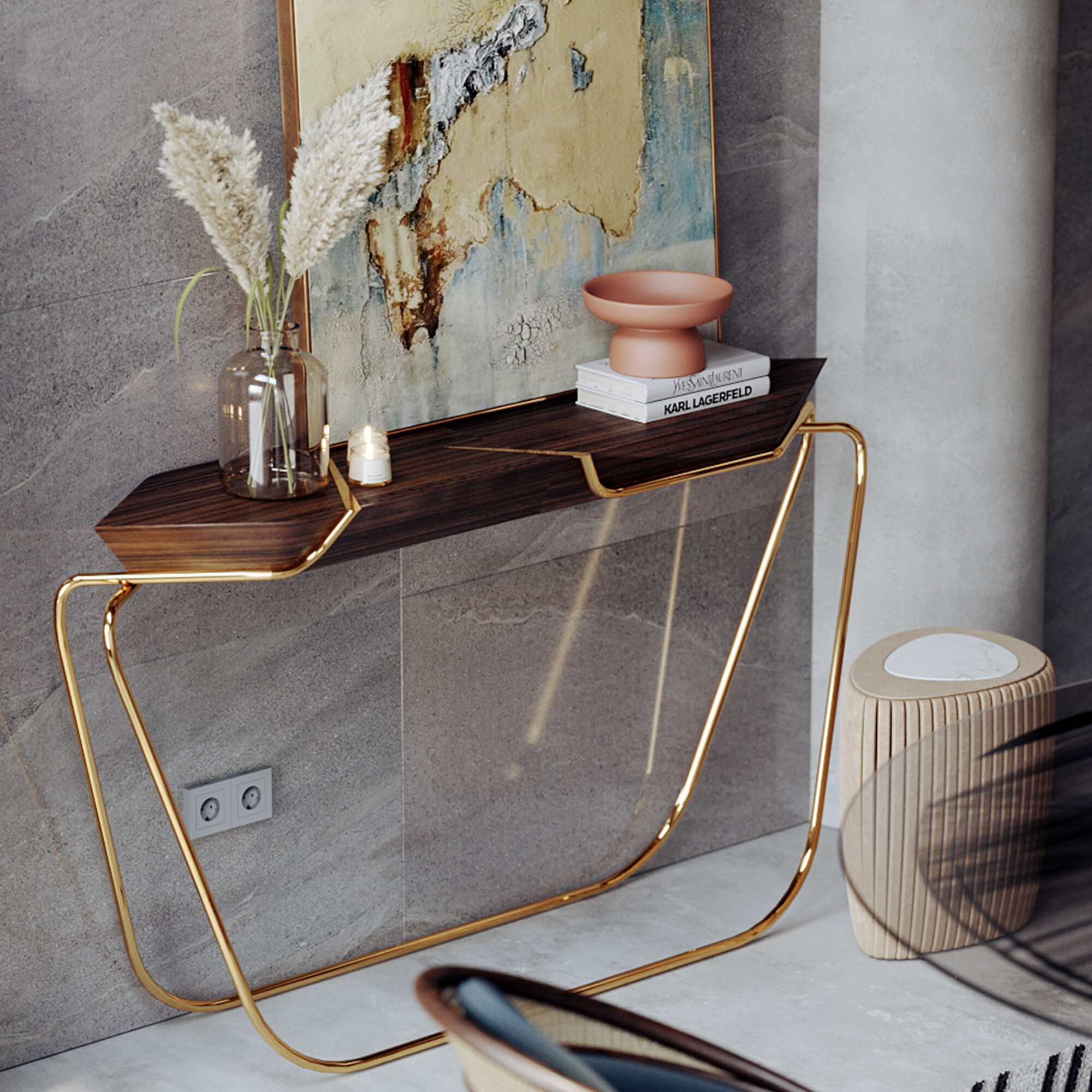
So, let's explore creative ways to use metallics in interior decoration. Get ready to discover how metallics can take your projects to a new level.
Metallics are incredibly versatile and can be used in different contexts. Their ability to adapt to different decorative styles and areas makes this material a go-to choice for designers and decorators, giving them the confidence to experiment and create unique spaces.
Metals play a crucial role in modern, maximalist and contemporary styles. Clean lines, geometric shapes, and polished finishes are characteristics of these styles, and metals such as stainless steel, chrome, and nickel combine perfectly. Metals accentuate simplicity and functionality, bringing a touch of sophistication and elegance.
The industrial style extensively uses metals, perhaps enhancing this material the most. Metals are often left exposed, celebrating their rawness and durability. Wrought iron, steel, and aluminum are commonly used in furniture frames, lamps, and architectural details.
In the classic style, for example, metals are used more ornately and opulently. Gold, bronze, and brass are the preferred metals, and they are used in lamps, mirror frames, and door handles.
In contrast, metals are not the protagonists since the Scandinavian style values simplicity and functionality. Still, including small metallic details can add an interesting contrast and a touch of modernity.
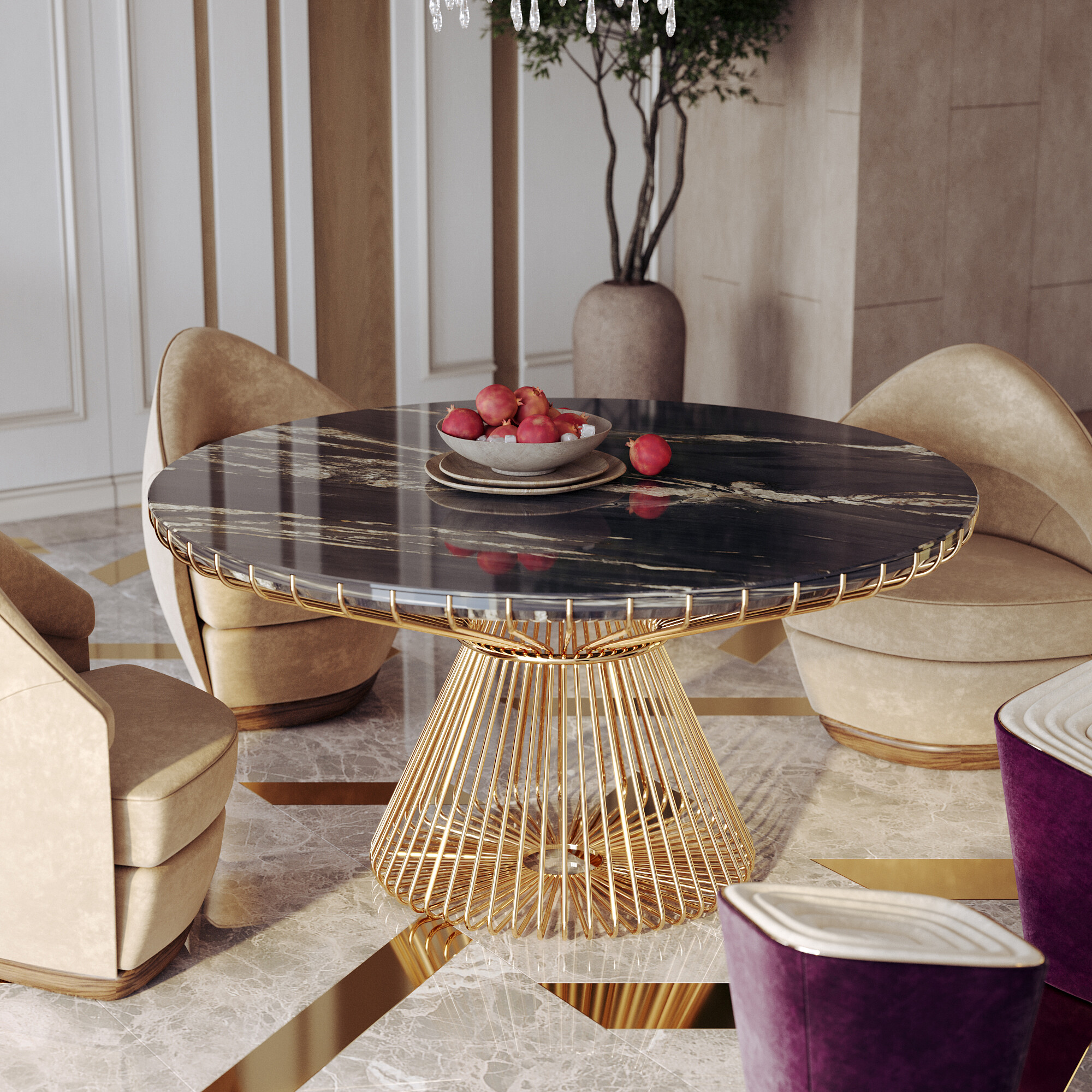
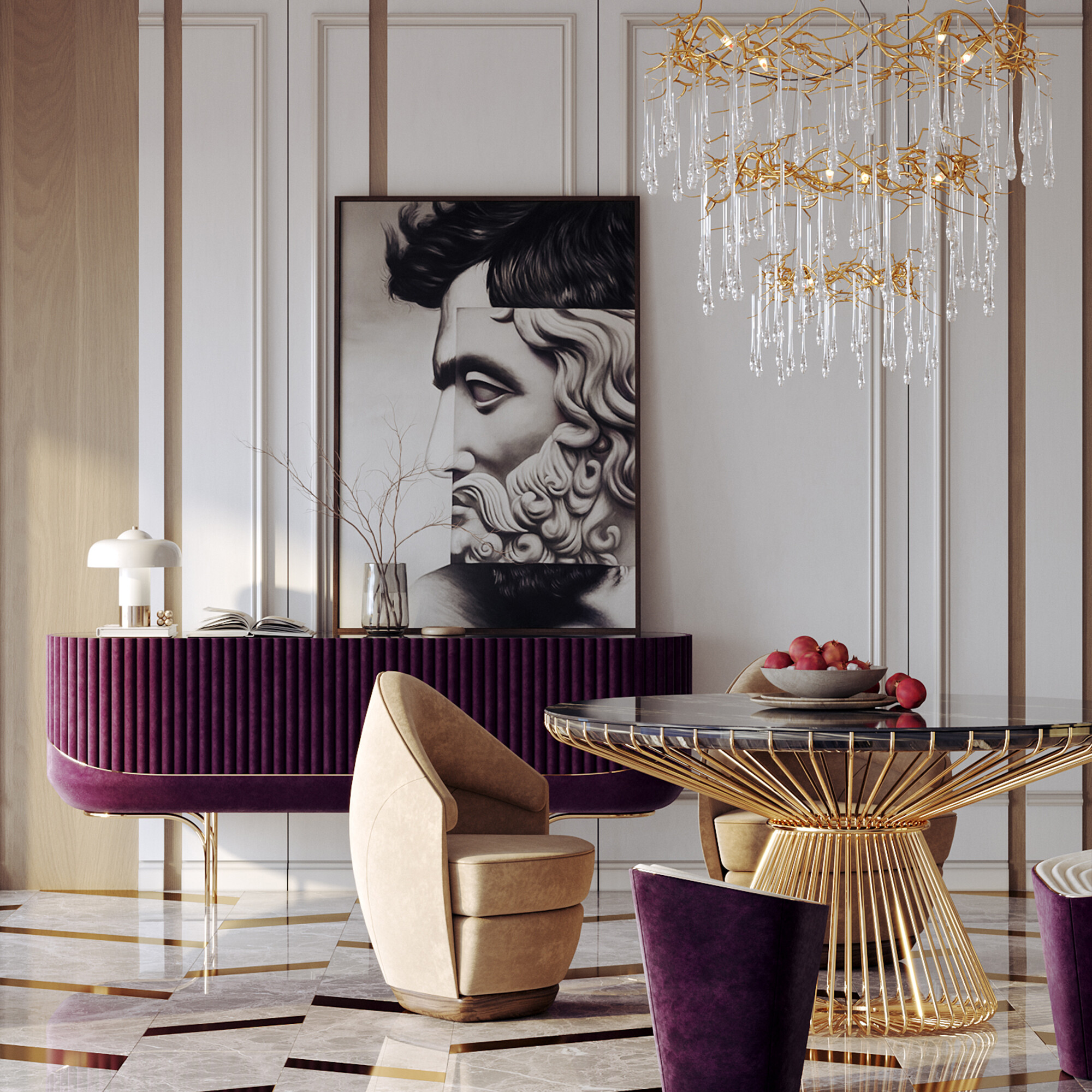
“For a house to be successful, the objects in it must communicate with one another, respond and balance one another.”
Andrée Putman, French interior designer
Given that metallics can adapt to various styles and contexts, the key is to balance and combine different types of metals to create harmonious and visually exciting spaces. This principle serves as a guide for designers and decorators, ensuring their projects are well-balanced and visually appealing.
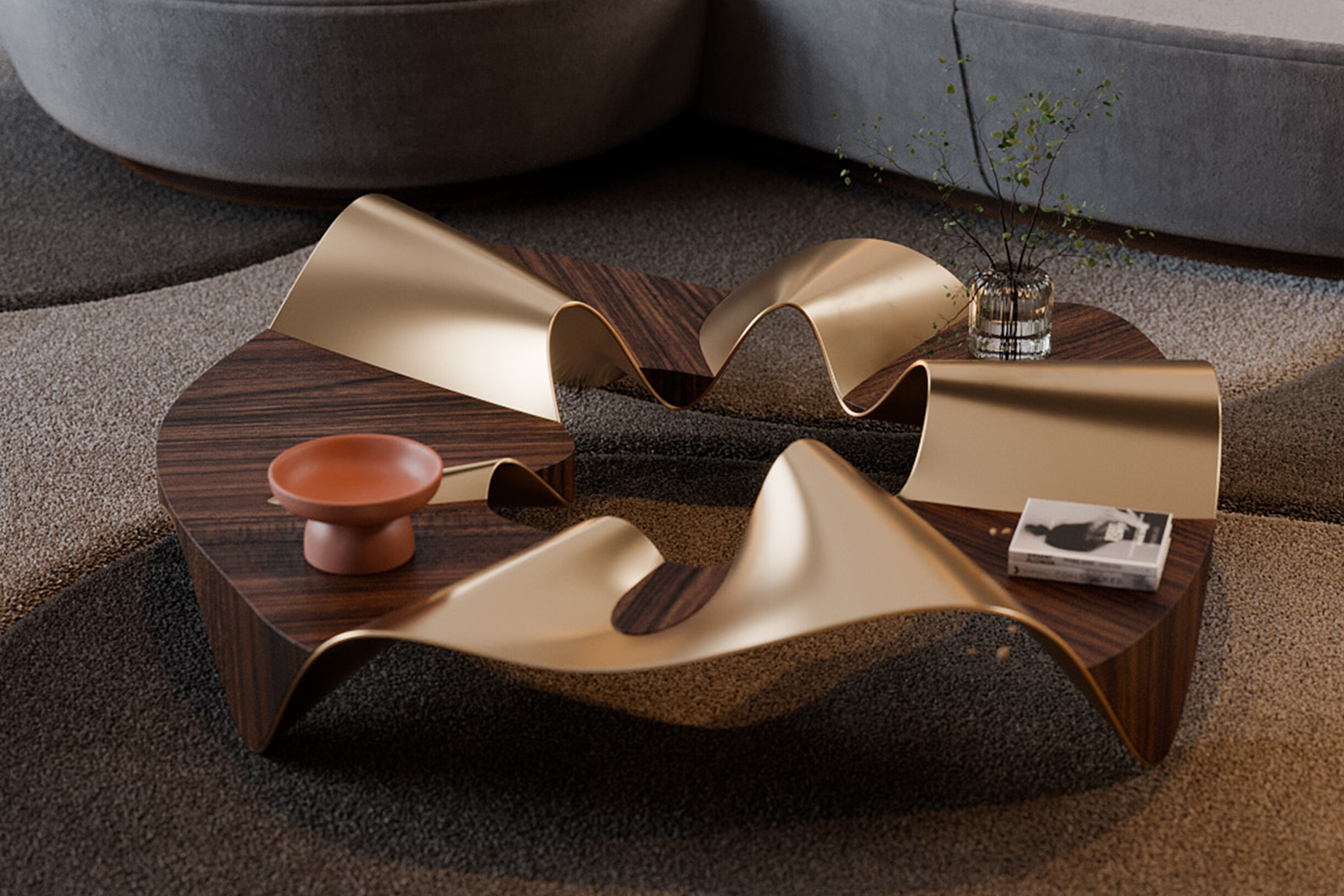
Metallic elements can be incorporated into interior design, from the smallest accessories to significant architectural elements. Here are five creative ways to transform your interior design projects using metallics.
Metallic accessories are an easy and effective way to introduce metals' shine and sophistication into your decor. They can serve as focal points or subtle details that complement the rest of the design.
What type of metal accessories can you use?
Lamps: table, floor, or pendant lamps with gold, copper, or brass finishes can add a touch of glamor and modernity. The light reflected by the metals creates a welcoming and elegant area.

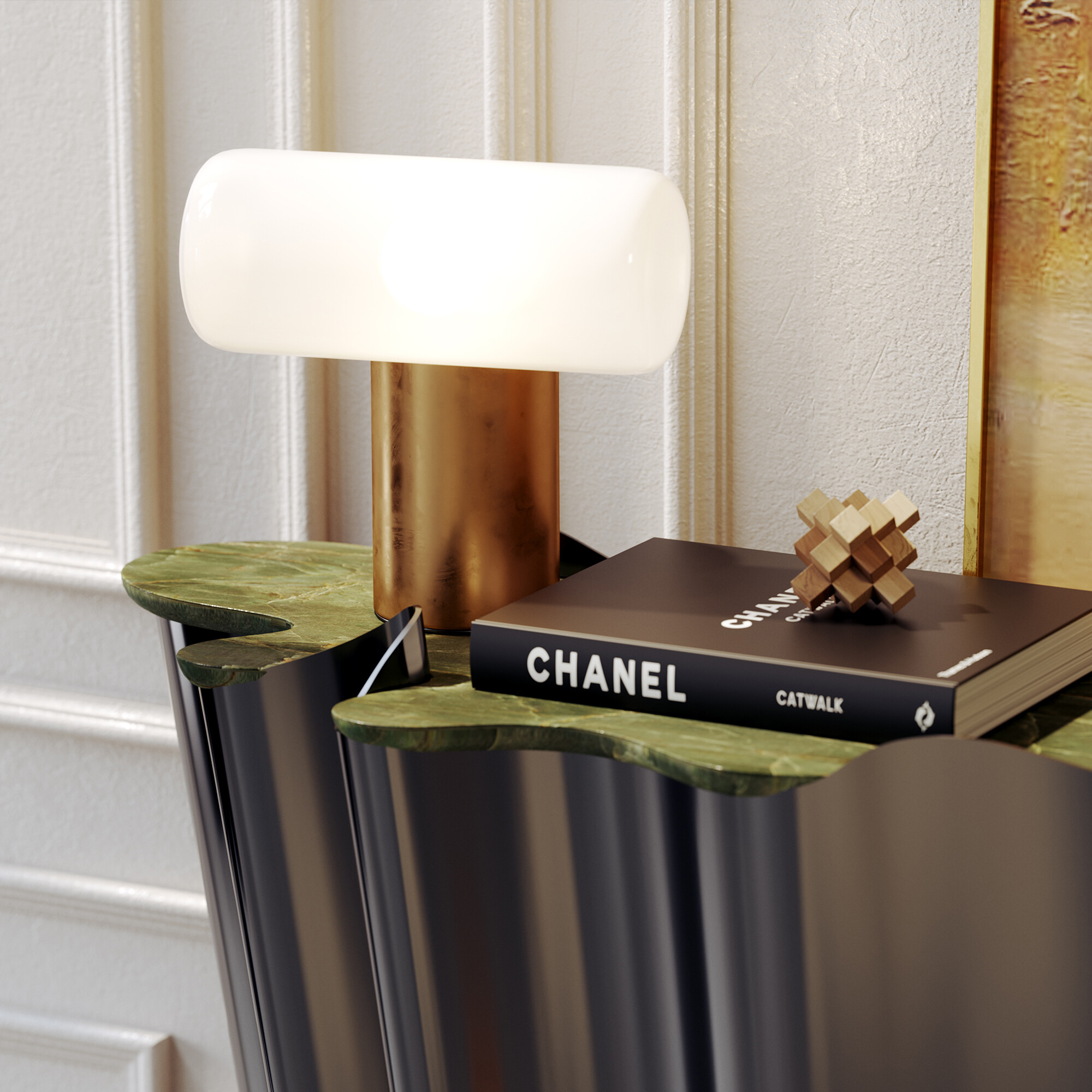
Picture Frames and Mirrors: Metal frames for pictures and mirrors are a great way to add sparkle to a wall. Mirrors with bronze, brass, or silver frames, such as the Amaterasu mirror from ALMA de LUCE, not only decorate but also help to enlarge spaces visually.

Decorative objects: try placing small decorative metallic objects, such as vases, sculptures, and trays, to create visual continuity.

This is a way to transform a space completely, adding a touch of sophistication and modernity. Furniture with a metallic finish, whether a centerpiece or a subtle detail, is widespread and practical. But what types of metal furniture can you use?
Coffee or side tables: tables with metal structures or brass or copper surfaces, such as the Ballet coffee table from ALMA de LUCE, are elegant and functional. Furthermore, they combine with various decorative styles, from modern to classic.
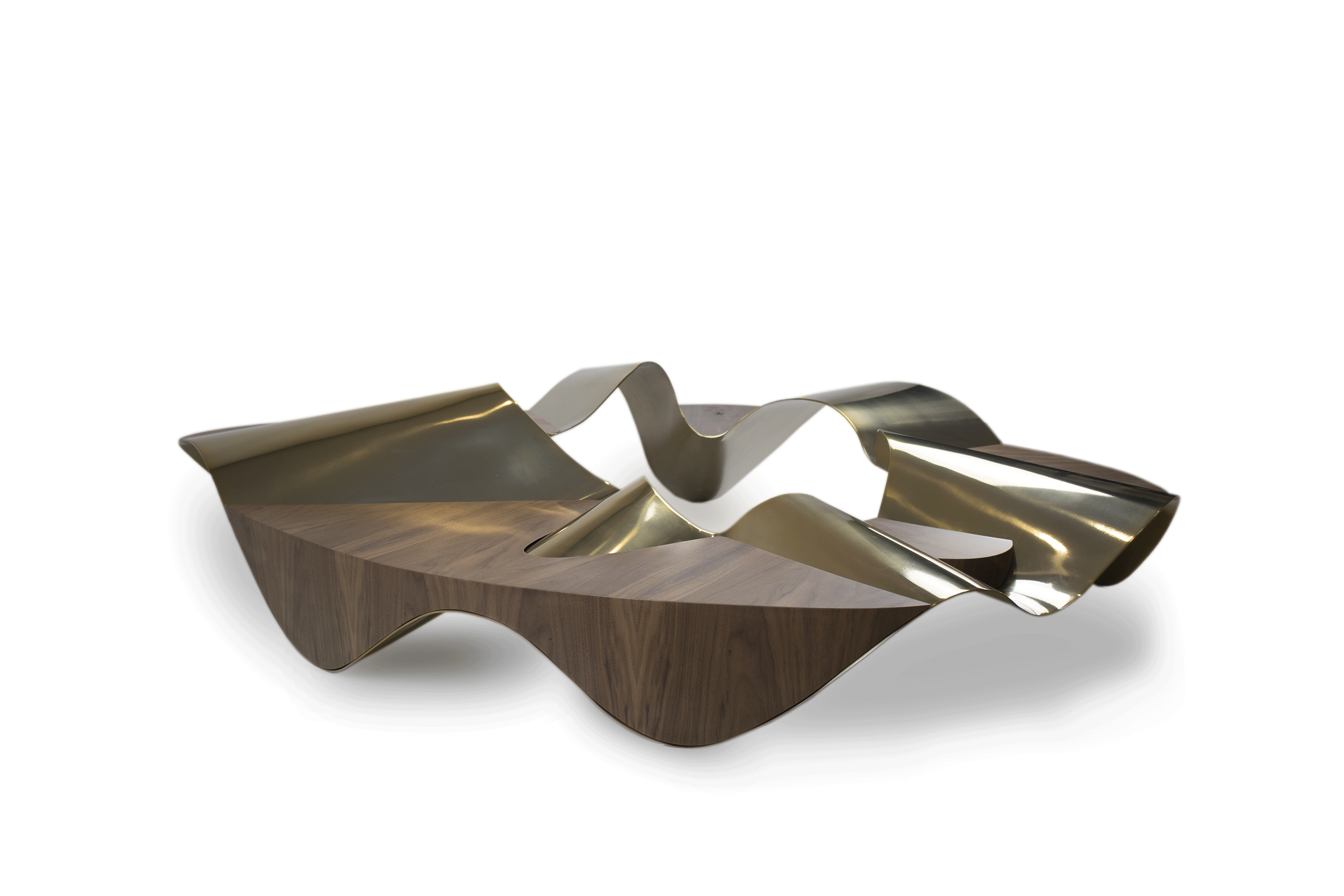
Chairs, stools and side tables: chairs and armchairs are essential in decorating a living room or home office. Chairs or stools with metal legs or entirely metal side tablers, like the Carlsbad side table from ALMA de LUCE, are durable and aesthetically pleasing.
Shelves and bookcases: metal structures for shelves and bookcases are robust and add an industrial element to the design.
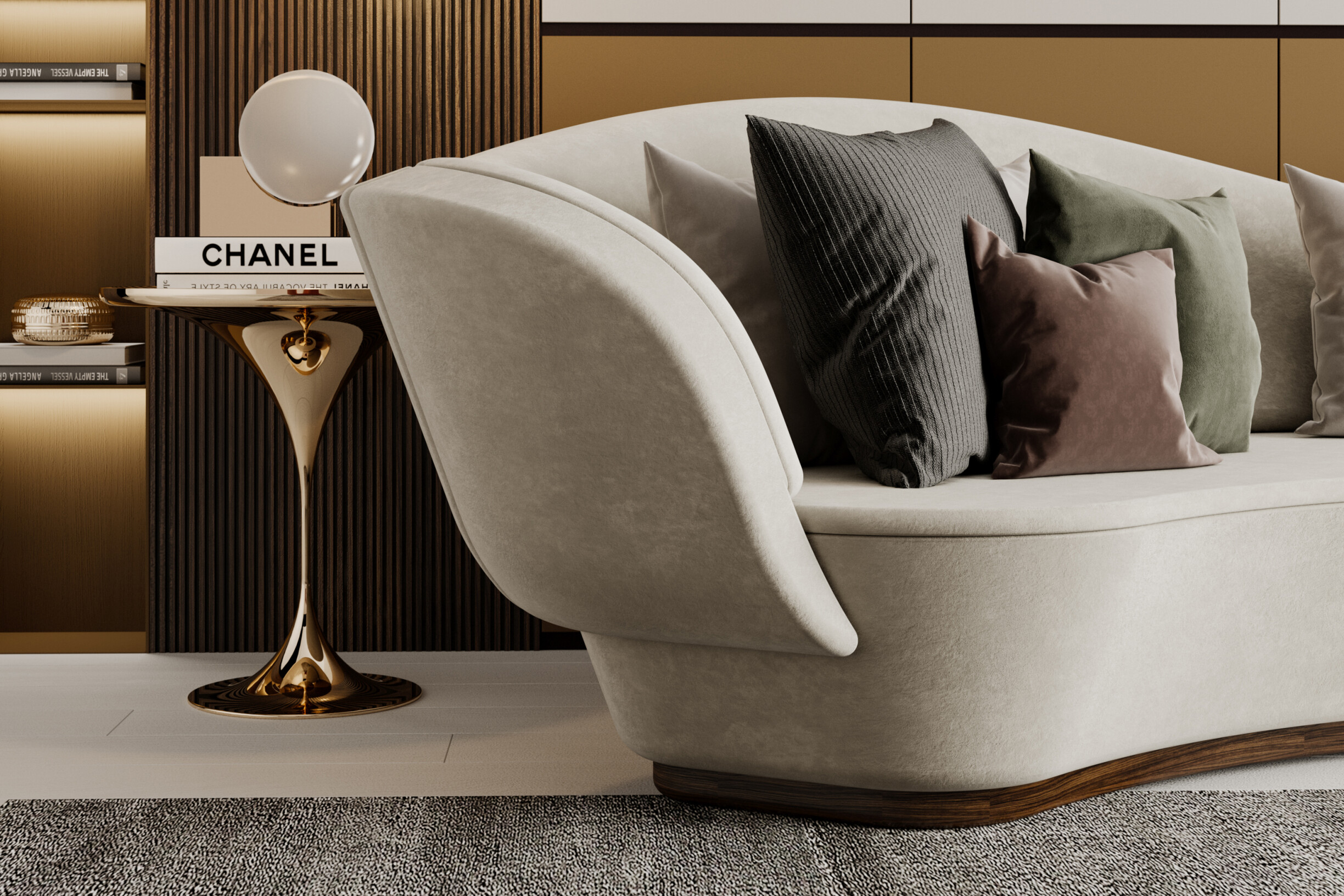
Incorporating metals into architectural details is a subtle but impactful way of adding luxury and modernity to interiors, especially in styles where metallic does not fit 100%, such as Scandinavian. Thus, highlighting and accentuating architectural lines or subtly combining metals with other materials, such as wood or marble, is possible, allowing for a balanced and cohesive aesthetic.
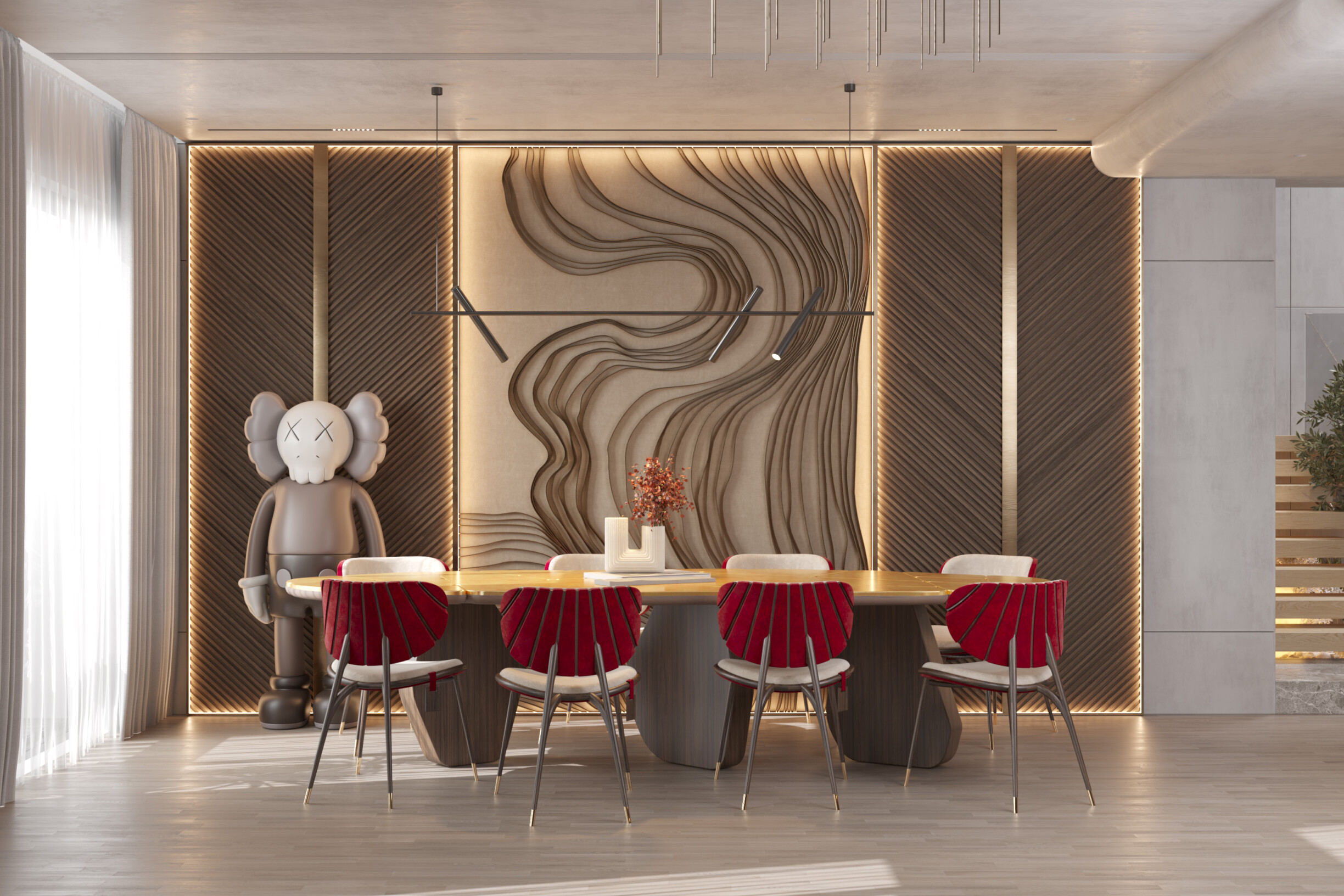
Textiles with metallic threads are a subtle and elegant way to incorporate metals into your decor, adding shine and texture without overloading the room.
For example, curtains with metallic threads can reflect natural light, creating a sparkling and sophisticated effect. Cushions with silver or gold accents can add a touch of luxury to sofas and beds. Rugs with metallic patterns or shiny threads can add visual interest and texture to the floor.
Opting for paints or wallpapers with metallic finishes is a bold and impactful way to incorporate metals into your interior decor. This solution allows you to completely transform a room's appearance, creating a luxurious and sophisticated area.
Combining different types of materials can be genuinely challenging. But when done correctly, it results in a cohesive and visually appealing space. Here are some quick tips to make it easier to mix metals effectively in interior decorating:
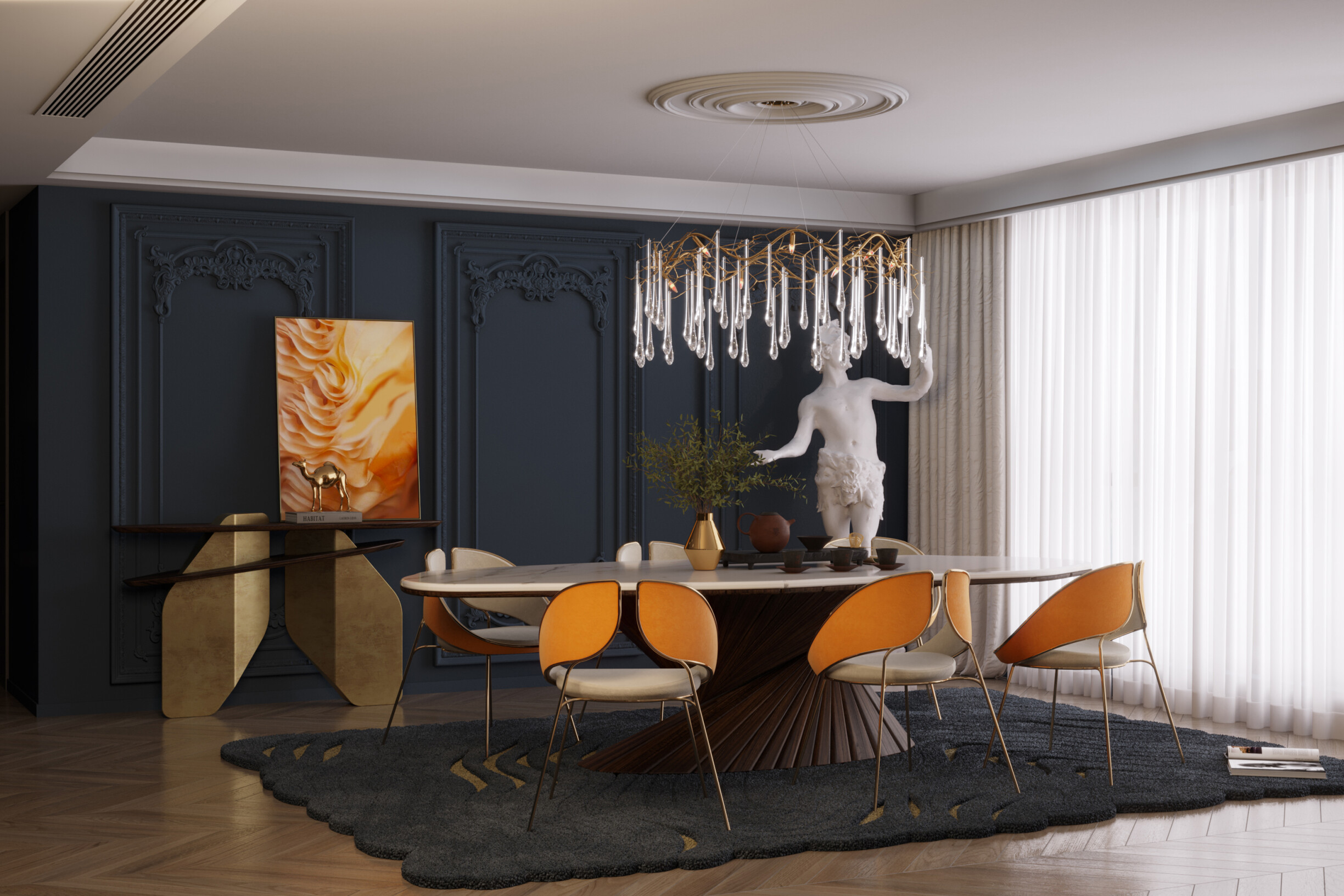
“Details are not the details. They make the design.”
Charles Eames, North-american designer and architect
This quote by designer Charles Eames perfectly portrays the importance of metallic elements in interior decoration. With their shine and sophistication, these materials are much more than details; they are fundamental components that can transform and elevate any space.
When incorporating metallic elements into your projects, be prepared to experiment and explore combinations. Use metals to highlight and highlight, add shine and depth, and create sophisticated and welcoming zones. The authentic design reveals itself in the details, and metallics are, without a doubt, details that make all the difference.
Stay tuned to our blog for more information and curiosities from the world of architecture, interiors, and design!
Also, you can follow us on Instagram, Facebook, and Pinterest to get inspiration about interior architecture styles, furniture, materials, and finishes!